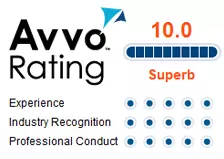Retrograde extrapolation is the practice of taking a bodily alcohol level at a known point in time (time of the alcohol test) and relating it earlier point in time (time of driving). In the typical drunk driving case retrograde extrapolation would be performed by a state expert to relate back a breath or blood alcohol level derived from a sample taken well after the driving is known to have occurred. The state always wants to use this testimony to show that the driver was MORE intoxicated at the time of the driving or accident than at the time of the test.
This problem with this testimony is that it can be misleading and incomplete and in some cases simply wrong. And, wrongful testimony about bodily alcohol levels can lead to wrongful drunk driving convictions. If you are charged with drunk driving in Michigan you will need a lawyer who has expertise in this complicated science.
To help you understand retrograde extrapolation it is helpful to look at the definitions of the words:
Retro – an earlier time period
Grade – incline or slope
Extrapolation – to guess at what is unknown from what is known
Thus, to perform retrograde extrapolation is to guess about a driver’s bodily alcohol level at some earlier point.
It this regard, it is interesting to see how some prosecutors and some experts attempt to simplify retrograde extrapolation so that it can be used to their advantage in gaining convictions at trial. An example of this simplification can be experienced by reading Alcohol-Related Offenses: Retrograde Extrapolation After Wager, written by a Michigan prosecutor with the help of two employees of the state police, Dr. Felix Adatsi and his assistant. Dr. Adatsi commonly testifies about retrograde extrapolation in Michigan court rooms, and I have cross-examined him on this topic dozens of times.
Retrograde extrapolation in a drunk driving case is anything but simple, and in some states it is not even allowable testimony. In other words, in some states experts can’t testify about retrograde extrapolation. Before we look at some lawyers and judges think about retrograde extrapolation, let’s look at what the scientists are saying.
The Science of Retrograde Extrapolation
The Widmark Formula:
In 1932 a Swedish scientist named E.M.P. Widmark published a his research addressing the issued of alcohol’s absorption, distribution and elimination in human subjects. This research still forms the basis for alcohol calculations performed in today’s courtrooms. Widmark found that because of alcohol’s unique characteristics, certain assumptions can be made relative to the manner in which a person will absorb alcohol, how this alcohol will be distributed throughout the body, and how it will eventually be eliminated. The essential problem with the formula is that there are individual differences in each of these functions, and scientists differ in their opinions relative to the amount of certainty that can be assigned to a BAC arrived at using this formula.
There are two leading scientists who have written extensively about this discipline are Dr. A.W. Jones and Dr. Kurt M. Dubowski. Each of them has a different opinion as to when and even if retrograde extrapolation can be done to any degree of scientific certainty.
The Dubowski school of thought:
Dubowski’s position is best summed up in his in his 1976 article “Human Pharmacokinetics of Ethanol. I. Peak Blood Concentrations and Elimination in Male and Female Subjects”, Alcohol Technical Reports, Vol 5, No. 4, 55-63 (1976), where he indicates “speculative retrograde extrapolation of the BAC to any point prior to an experimentally determined value must be avoided in forensic practice, or so qualified by stated assumptions that the exercise becomes pointless”. Id. at 61.
In an article that strikes at the very core of the Widmark formula, Dubowski indicates “[B]reath and blood alcohol time curves are subject to short term fluctuations from the trend line and other irregularities, and often do not follow the typical Widmark pattern”. Dubowski, Absorption, Distribution and Elimination of Alcohol: Highway Safety Aspects, Journal of Studies on Alcohol , Supplement, pg 106 (July, 1985). Throughout this article he embarks on a discussion of each assumption contained in the Widmark formula, and describes how these assumptions require nothing short of guesswork. Regarding alcohol absorption, Dubowski found that “peak alcohol concentrations reached after ingestion of identical weight-adjusted does of alcohol typically vary two to three fold, even in homogeneous experimental subject populations and under identical experimental conditions. Id. at 100.
Dubowski has similar misgivings relative to the issue of alcohol elimination. In fact, Dubowski calls into question a concept that is central to the Widmark formula, i.e., that alcohol is eliminated by what is termed “zero order kinetics”. Dubowski is of opinion that this model is flawed when applied “to at least a significant portion of the population”. Id. at 100. Dubowski concludes that any attempt to determine two points on an elimination curve has “many obvious shortcomings and limitation for determining functional blood or breath alcohol decrease rates.” Id. at 101.
Dubowski has this to say relative to the distribution of alcohol: “[B]ecause alcohol is not uniformly distributed between the cellular and non-cellular components of blood and because of the relative frequency of hematological abnormalities in the population as well as circadian and other shifts of fluid volumes, use of whole blood alcohol concentrations further complicates the physical, chemical and biological factors involve in alcohol distribution and partition. Id. at 102.
Finally, Dubowski’s conclusion regarding the feasibility of retrograde extrapolation is that “no forensically valid forward or backward extrapolation of blood or breath alcohol concentrations is ordinarily possible in a given subject and occasion solely on the basis of time and individual analysis results.” Id. at 106.
The Jones school of thought:

Barone with Dr. A.W. Jones November 2008
A.W. Jones is modern Swedish toxicologist who has also researched and written extensively on the issues of alcohol and traffic safety. It is his opinion that for forensic purposes, an extrapolated BAC should be given within a range of value, and that in fairness to a criminal defendant, the lowest value should be assigned. Jones describes the problem as follows:
“[T]he rate of disappearance of ethanol from the blood has important ramifications in forensic toxicology as well as in biomedical alcohol research. It sometimes happens that the blood alcohol concentration (BAC) at the time of driving must be estimated from the BAC existing several hours later, for example, at the time of obtaining a blood sample. This entails making a back-estimation or retrograde extrapolation of the BAC. For this purpose, certain assumptions must be made about the pharmacokinetics of ethanol for a given individual.
Jones, Disappearance Rate of Ethanol from the Blood of Human Subjects: Implications in Forensic Toxicology, Journal of Forensic Sciences, JFSCA, Vol. 38, No. 1, pg 104 (January 1993).
Jones has of actually gone a bit further Dubowski’s proclamation that retrograde extrapolation is forensically untenable and instead calls the practice “dubious.”
What Courts Have Said about Retrograde Extrapolation:
The Criminal Appeals Court of Texas in Mata v. State,46 S.W.3d 902 (Tex. Crim. App. 2001), addressed this issue and the scientific technique of “retrograde extrapolation” in excruciating detail. The Mata Court took Judicial Notice of scientific literature in the area and cited in its opinion numerous publications. The cited authority included that of Richard Watkins, Assistant Director of the Phoenix Crime Lab, and Eugene Adler, a toxicologist for the Arizona Department of Public Safety. Id. at 910. (See The Effect of Food on Alcohol Absorption and Elimination Patterns, 38 J. of Forensic Science 285-291(1993).
The Mata Court, citing from Watkins and Adler, stated that:
The limitations and pitfalls associated with retrograde extrapolations are often not appreciated by laymen and the courts. The authors concluded that “any attempt at retrograde extrapolation should be made with caution, and performed by persons able to assess and discuss the applicability of a retrograde extrapolation to a particular situation.” Id. at 910.
The Court also noted that Watkins and Adler were cautious about the reliability of “retrograde extrapolation”. Id. The Court relying on other experts in the field wrote the following:
They write that retrograde extrapolation is a “dubious practice” and that expert testimony on the issue “requires careful consideration of the absorption kinetics of ethanol and the factors influencing this process”. They explain that “the absorption profile of ethanol differs widely among individuals, and the peak [BAC] and the time of its occurrence depend on numerous factors. Among other factors, the drinking pattern, the type of beverage consumed, the fed or fasted state, the nature and composition of foodstuff in the stomach, the anatomy o the gastrointestinal canal, and the mental state of the subject are considered to play a role.”
The Mata Court acknowledged that few jurisdictions have considered the reliability of ”retrograde extrapolation” because many states have eliminated any need for “retrograde extrapolation” as a matter of law. Id. at 913. The statutes in these jurisdictions provide for a rebuttable presumption if the persons BAC is over the legal limit, “assuming the test was conducted within a specified or reasonable time from the driving”. Id.
The Mata Court was only able to find two courts in the entire nation that have touched upon the issue of reliability of “retrograde extrapolation”. Id. An Arizona appellate court made reference to the issue in a footnote stating that the science of ‘retrograde extrapolation” “has achieved general acceptance in the scientific field”. Id. citing Ring v. Taylor, 141 Ariz. 56, 69 fn. 6. (Ariz. App. 1984).
The other court that discussed the issue of ‘retrograde extrapolation” was the Alabama Court of Appeals in Smith v. Tuscaloosa,601 So.2d 1136 (Ala. Crim. App. 1992). Id. at 913-914. The Alabama Court disagreed with the Arizona Court and found from studies that “retrograde extrapolation” is an unreliable method of determining a persons BAC. Id.
The inadequacies of retrograde extrapolation extend beyond mere technical inaccuracies to problems which are inherent in the basic premises and calculations of this technique. These inadequacies render retrograde extrapolation inherently untrustworthy and therefore inappropriate for use as evidence to convict drunk drivers. Id. at 914.
After a complete and thorough study of “retrograde extrapolation”, the Mata Court concluded that even those who advocate “retrograde extrapolation” as a reliable technique use it only if certain factors are known, “such as the length of the drinking spree, the time of the last drink, and the persons weight”. Id. 915. The Texas Court further concluded:
The court evaluating the reliability of a retrograde extrapolation should also consider (a) the length of time between the offense and the tests administered; (b) the number of tests given and the length of time between each test; and (c) whether, and if so, to what extent, any individual characteristics of the defendant were known to the expert in providing his extrapolation. These characteristics and behaviors might include, but are not limited to, the persons weight and gender, the person’s typical drinking pattern and tolerance for alcohol, how much the person had to drink on the day or night in question, what the person drank, the duration of the drinking spree, the time of the last drink, and how much and what the person had to eat either before, during, or after the drinking. Id. at 916. (emphasis supplied).
Modern Thinking on the Subject:
Another entry to the science of retrograde extrapolation is the BAC Tracker software. In a recent article appearing in Forensic Magazine, Alcohol in the Twenty First Century, New Technology, the author makes the a point that is opposite that made by the Michigan prosecutor, i.e., that retrograde extrapolation is very complicated and that various formulae should be used in performing retrograde extrapolation in the court room.
If You’re Facing a Drunk Driving Case with Possible Retrograde Extrapolation Evidence:
If you have a drunk driving case where you think the prosecutor may attempt to introduce retrograde extrapolation testimony then you need a law firm with lawyers who are experts in retrograde extrapolation and who can go head to head with the prosecutor and their experts. If you’d like to discuss this with us, then please contact us today so that we can describe how we may be able to help you defend your case.










{ 2 comments… read them below or add one }
I would like to discuss hiring you or a toxicologist that you recommend to defend me. I was charged with DUI in Canada, blew a 0.070 at 18:53, and was retrograded to .094 at 16:15.
I am also interested in knowing about “plateau” defense of retrograde- within 2-3 hours, how can the prosecution be sure that a plateau, which can last for several hours, was not in effect? In my case I blew a 0.070 twice, but the machine I blew on rounds to the nearest hundredth.
Any assistance that you could offer me?
Michael Schmidt
Mike,
I would suggest that you have you lawyer contact me to discuss this further. I know of one excellent expert in Canada who can help.